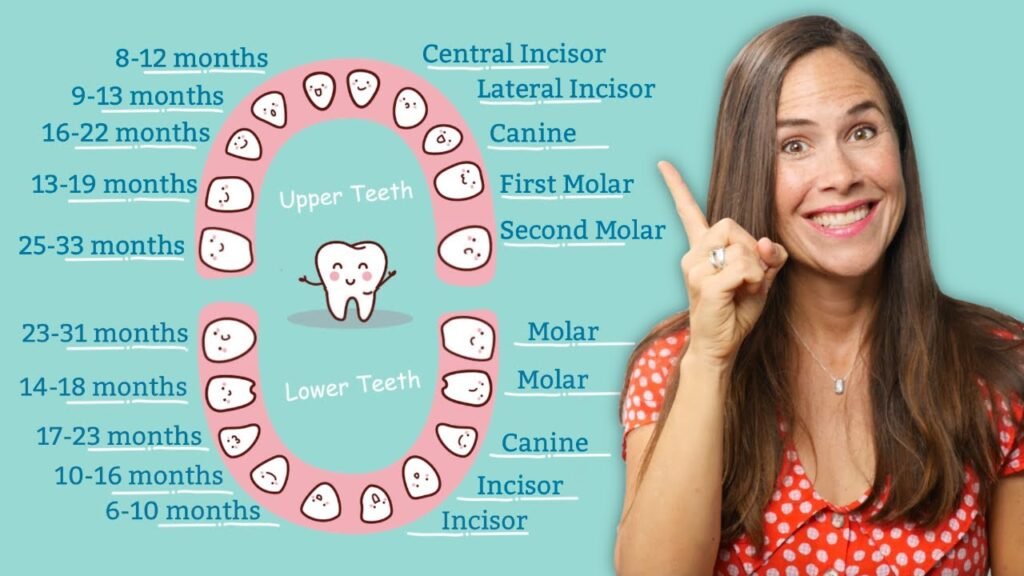Decoding Primary Dentition: Which Teeth Emerge First

When it comes to a baby's development, one of the exciting milestones is the eruption of their first teeth. But which teeth come out first? Understanding the order in which baby teeth typically emerge can help parents anticipate and prepare for this important stage of their child's growth. In this article, we will explore the sequence in which baby teeth usually appear, as well as provide tips for soothing teething discomfort and promoting good oral hygiene habits from an early age.
What is the order in which teeth come in?
Baby teeth, also known as primary teeth, come in a specific order starting from the front and moving towards the back of the mouth. The first to emerge are the bottom central incisors, followed by the top central incisors, lateral incisors, first molars, canines, and finally the second molars. This process typically begins around 6 months of age and can last until shortly before a child turns 3.
What age do the first teeth fall out?
Around the age of 6-8, children typically lose their four center teeth, both the bottom and top incisors. These are followed by the sharp teeth, known as canines or cuspids, and the first molars, which usually fall out around 9-12 years old. The last to go are the second molars, making the process of losing baby teeth a gradual and natural part of growing up.
As children reach the 6-8 year range, they will likely start losing their four center teeth, the bottom and top incisors. Following this, the canines or cuspids and the first molars typically fall out around 9-12 years old. The process concludes with the second molars, making the transition from baby teeth to adult teeth a gradual and normal part of childhood development.
Which baby teeth cause the most pain when they come in?
When it comes to teething, the molars are often the teeth that cause the most discomfort for babies. As the largest teeth in the mouth, their size can make the process of breaking through the gums particularly painful. Although some babies may have a smooth teething experience with minimal pain, it is not uncommon for parents to notice their little ones struggling more when the molars start to come in.
Unveiling the Mystery: The Order of Primary Tooth Eruption
Are you curious about the fascinating process of primary tooth eruption? The order in which children's baby teeth emerge is a natural wonder that has puzzled parents and dental professionals alike. The first tooth usually appears around 6 months of age, with the last primary tooth typically erupting by age 3. Understanding the sequence of primary tooth eruption can help parents and caregivers monitor their child's dental development and identify any potential issues early on. By unraveling the mystery of primary tooth eruption, we can ensure that children maintain healthy smiles and proper oral hygiene from an early age. Keep a close eye on your child's dental milestones and enjoy the wonder of their growing smile!
Unveiling the order of primary tooth eruption is an essential aspect of pediatric dental care. As the first set of teeth to emerge, primary teeth play a crucial role in a child's oral development and overall health. By following the natural progression of primary tooth eruption, parents and caregivers can better understand when to expect new teeth and how to support their child's dental health. This knowledge also assists dental professionals in providing the best possible care and guidance for young patients. With the mystery of primary tooth eruption revealed, we can ensure that every child receives the attention and support they need to maintain a healthy and beautiful smile for years to come.
Cracking the Code: Understanding the Sequence of Baby Teeth Emergence
Have you ever wondered when your baby's teeth will start coming in? Understanding the sequence of baby teeth emergence can provide valuable insight into your child's development. Typically, the first tooth appears around 6 months of age, followed by a steady progression of teeth over the next few years. By familiarizing yourself with this natural process, you can better prepare for teething symptoms and take proactive steps to ensure your child's oral health. So, keep an eye out for those first tiny teeth and remember that each new tooth is an exciting milestone in your baby's growth.
In summary, understanding the order in which baby teeth emerge is important for parents and caregivers to monitor the oral development of young children. By knowing what teeth come out first, they can better anticipate and address any potential issues that may arise. It is also crucial for promoting good oral hygiene habits from an early age, setting the stage for a lifetime of healthy smiles.